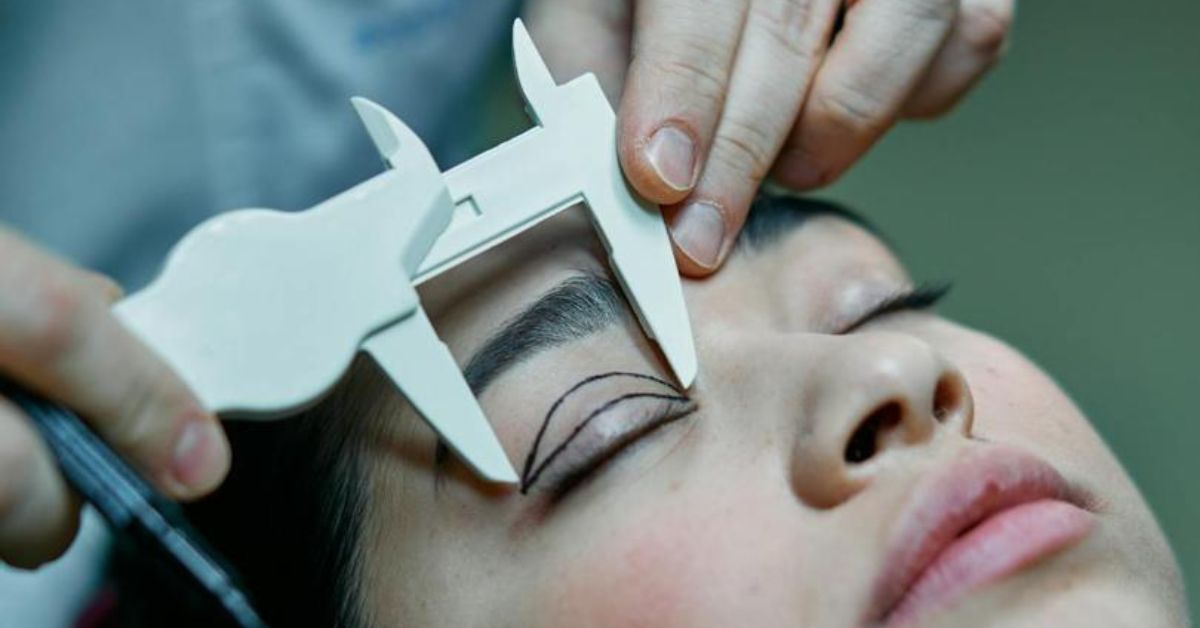HEALTH
Everything You Need to Know About Eyelid Surgery

Eyelid surgery, also known as blepharoplasty, is a cosmetic procedure designed to enhance the appearance of the eyelids. This surgery can treat sagging skin, puffiness, and wrinkles around the eyes, giving you a more youthful and refreshed appearance. Many people consider their eyes to be the focal point of their face, and improving their appearance can significantly boost confidence and overall facial aesthetics. This comprehensive guide will cover the essentials of eyelid surgery, including its benefits, the procedure itself, recovery, potential risks, and how to determine if it’s the right choice for you.
The Benefits of Eyelid Surgery
Eyelid surgery provides a variety of benefits that extend beyond cosmetic enhancement. One of the primary benefits is the rejuvenation of the eye area, which can help you appear more alert and youthful. Over time, the skin around the eyes loses elasticity, resulting in droopy eyelids and under-eye bags. This operation successfully eliminates extra skin and fat while tightening the surrounding muscles, resulting in a smoother look. Furthermore, for those with severe drooping, eyelid surgery can improve vision by raising the upper eyelids out of the way. Eyelid surgery is a valuable option for many individuals who want to rejuvenate their facial appearance because it has both aesthetic and functional benefits.
The Eyelid Surgery Procedure
The procedure for eyelid surgery in Virginia is relatively simple, but it requires precision and expertise. The first step involves the provision of anesthesia, which can be either general or local, with sedation based on the patient’s request and the length of the operation. In order to reduce obvious scarring, incisions are carefully placed along the creases and natural lines of the eyelids throughout the procedure. In order to remove or reposition fat deposits, tighten muscles, and remove extra skin, an incision is usually made inside the natural crease of the upper eyelid.
In order to treat puffiness and wrinkles, lower eyelid surgery often entails making an incision within the lower eyelid or just below the lash line. Depending on whether the upper and lower eyelids are being treated, the full operation usually takes one to two hours.
Recovery and Aftercare
Recovery from eyelid surgery is divided into several stages, and proper aftercare is essential for the best results. You might anticipate some swelling and bruising around the eyes right after the procedure; these side effects should progressively go away throughout the first week. Strict adherence to the surgeon’s postoperative recommendations is necessary to guarantee a speedy healing process. This includes elevating the head to lessen swelling, using cold compresses to lessen bruises, and refraining from physically demanding tasks that might strain the eyes. If the stitches cannot be removed, they are usually taken out in a week, and most patients are back to their regular activities in ten to fourteen days.
While the majority of the swelling and bruising goes away within two weeks, the surgery’s final results take several months to be apparent as the tissues fully heal and settle into their new contours.
Potential Risks and Complications
Eyelid surgery, like any other surgical procedure, has potential risks and complications, but these are rare when performed by an experienced and qualified surgeon. Infection, bleeding, dry eyes, difficulty closing the eyes, and temporary or permanent changes in vision are all potential risks. Another factor to consider is minimal and well-concealed scarring. To explore these concerns and find out whether you are a good candidate for the treatment, you must have a full consultation with your surgeon.
A thorough medical history and a comprehension of your objectives will enable the surgeon to customize the procedure to maximize results and minimize risks. Reducing the possibility of negative effects even further is ensuring that the operation is carried out in a facility that has been recognized and accredited.
Determining if Eyelid Surgery is Right for You
Several factors must be considered when determining whether eyelid surgery is right for you, including your overall health, cosmetic goals, and specific eye-related concerns. Pricing is also a key consideration, as the cost can vary based on the complexity of the procedure and the surgeon’s expertise. People who are in excellent health, do not have any major eye diseases, and have reasonable expectations for the procedure are the best candidates for eyelid surgery. This surgery might be quite beneficial if you are plagued by drooping or swollen eyelids or if extra skin is obstructing your eyesight. Your age, skin type, and ethnic background should all be considered since they can impact the surgical method and outcome. A thorough consultation with a board-certified plastic surgeon can help you decide whether to get eyelid surgery by offering you a specific suggestion and a thorough examination.
Conclusion
Eyelid surgery is a transformative procedure that offers both aesthetic and functional benefits. By addressing issues like sagging skin, puffiness, and wrinkles, it can rejuvenate the eye area, improve your facial appearance, and even improve vision. Anyone considering this surgery should understand the benefits, procedure, recovery process, potential risks, and candidacy criteria. With proper planning, consultation, and aftercare, eyelid surgery can provide lasting and satisfying results, boosting both your appearance and confidence.
FOOD & DRINKS
What are the Health Benefits of Adding Blue Swimmer Crabs to Your Diet?

More than a mere delicacy, blue swimmer crabs also offer a range of health benefits that make it such a valuable addition to your diet. Packed with essential nutrients and low in calories, a blue swimmer crab can contribute to overall well-being and support various aspects of health. Let’s explore the health benefits of adding blue swimmer crab to your diet.
Rich Source of Protein
If you’re an active person, here’s a good reason to learn how to cook blue swimmer crab. This seafood option is an excellent source of high-quality protein, essential for building and repairing tissues in the body. Protein is also important for supporting muscle growth, maintaining healthy hair and nails and keeping you feeling full and satisfied after meals.
Low in Fat and Calories
Despite its rich taste and texture, blue swimmer crab is relatively low in fat and calories, making it a healthy choice for those watching their weight or looking to maintain a balanced diet. By incorporating blue swimmer crab into your meals, you can enjoy a satisfying and flavourful dish without worrying about excessive calorie intake.
High in Vitamins and Minerals
Blue swimmer crab is packed with essential vitamins and minerals that are vital for overall health and well-being. It’s particularly rich in Vitamin B12, which supports nerve function and helps prevent anaemia.
In addition, blue swimmer crabs contain significant amounts of Vitamin C, Vitamin E, magnesium and selenium, all of which play important roles in various bodily functions.
Omega-3 Fatty Acids
Like many seafood, blue swimmer crab is a good source of omega-3 fatty acids, which are known for their heart-healthy benefits. Omega 3s help reduce inflammation in the body, lower triglyceride levels and support cardiovascular health. Incorporating blue swimmer crab into your diet can help reduce the risk of heart disease and improve overall heart function.
Promotes Bone Health
Blue swimmer crab is rich in minerals like calcium, phosphorus and zinc, which are all essential for maintaining strong and healthy bones. These minerals help support bone density, prevent osteoporosis and reduce the risk of fractures and bone-related disorders, especially as you get older.
Supports Immune Function
The vitamins and minerals found in blue swimmer crabs, such as Vitamin C, Vitamin E and selenium, play important roles in supporting immune function and helping the body fight off infections and diseases. By incorporating blue swimmer crabs into your diet, you can give your immune system a natural boost and stay healthy year-round.
Blue Swimmer Crab: Sumptuous and Nutritious
Still haven’t tried blue swimmer crabs? It’s time to incorporate them in your diet and reap a range of benefits from getting essential nutrients to enhancing your overall well-being. Whether you enjoy it steamed, grilled or in a delicious seafood pasta, this delicious seafood option is a versatile and nutritious addition to any meal. So, the next time you’re planning your menu, consider adding blue swimmer crab for a tasty and healthful dining experience.
HEALTH
The Surprising Benefits of Weight Loss Peptides You Need to Know

Peptides have long been heralded as the unsung heroes of biological processes. It plays important roles in everything from inflammatory responses to cell signaling.
However, their recent ascent into the limelight in the field of weight management may surprise many. Today, we’re taking a deep dive into the realm of weight loss peptides.
We’ll explore how these compounds promise a path to a healthier, more vibrant life. So, read on!
Increased Fat Loss
The primary mechanism of action behind weight loss peptides is their ability to increase fat loss. These compounds work by mimicking the effects of our body’s natural hormones. This includes growth hormone and insulin-like growth factor-1 (IGF-1).
By activating these pathways, they can promote lipolysis (the breakdown of fats) and inhibit lipogenesis (the creation of new fats). As a result, the body can burn fat more efficiently. It can prevent the storage of excess fat.
Additionally, peptides, particularly semaglutide peptides, may also increase metabolism and energy expenditure. This can lead to even greater fat loss.
Enhanced Metabolic Rate
Metabolism refers to the chemical reactions that occur in our body to maintain life. A faster metabolic rate means our body is burning more calories, even at rest.
Weight loss peptides have been found to stimulate metabolism by increasing thermogenesis. This is the production of heat in the body. This process requires energy and therefore burns more calories.
Moreover, certain peptides can also improve insulin sensitivity and glucose metabolism. This can benefit those with conditions like obesity or diabetes.
Preservation of Lean Muscle Mass
One of the biggest challenges in weight loss is maintaining muscle mass while shedding fat. This is where peptides can offer a significant advantage.
Certain peptides, such as growth hormone-releasing peptides (GHRPs), can stimulate the production of growth hormone and promote muscle building. This can help individuals preserve their lean muscle mass while losing fat. This can result in a more toned and defined physique.
Appetite Regulation
Weight loss peptides can also impact our appetite and food intake. Some peptides have been found to reduce hunger and increase satiety. This can help individuals stick to their weight loss goals by preventing overeating.
Moreover, by regulating the levels of hormones involved in appetite, peptides can also help individuals make healthier food choices and resist cravings for unhealthy foods. This can lead to long-term weight management success.
Improved Energy and Exercise Performance
The benefits of peptides for body weight loss treatment extend beyond just the physical changes. By increasing energy and endurance, these compounds can also improve exercise performance.
Some peptides have been found to enhance oxygen delivery and nutrient uptake in the muscles. This allows individuals to train harder and longer. This can result in more calories burned during workouts and ultimately contribute to weight loss.
As long as you get your supplements from the right provider like Top Semaglutide Provider, these compounds can be safe and effective in improving weight loss outcomes.
Discover the Surprising Benefits of Weight Loss Peptides
Weight loss peptides offer a multitude of benefits. Not only do they increase fat loss and improve metabolism. They can also preserve lean muscle mass, regulate appetite, and enhance exercise performance.
With these surprising advantages in mind, it’s no wonder that weight loss peptides are gaining recognition as powerful tools for weight management. Keep in mind that it is important to consult a healthcare professional before starting any new supplement regimen.
Should you wish to read more, visit our blog. We’ve got more topics!
HEALTH
Transitional Living’s Crucial Role in the Continuum of Addiction Recovery

In the process of transitioning from rigorous inpatient treatment for drug misuse to the independence of sober living situations, transitional living emerges as an essential bridge. It encompasses a one-of-a-kind strategy within the larger arena of addiction treatment programs, providing a structured recovery pathway for persons who are struggling with the difficulties associated with alcoholism or drug abuse.
The path of many people who are battling addiction often starts with a moment of confrontation and revelation, which is typically accomplished via the use of an intervention.
During these types of interventions, members of the client’s family and other loved ones get together to convey a unified front, asking the individual to accept their addiction and think about the many treatment alternatives available to them.
Note that this defining moment highlights the gravity of their circumstance, which is frequently characterized by the threat of broken relationships in the event that they refuse therapy.
Many people find themselves at a crossroads after completing the early rounds of therapy because they are unable to continue their stay in residential institutions due to budgetary concerns.
Transitional living is an alternative that is easily accessible and provides a continuum of care at a fraction of the expense of traditional residential care. By offering a framework that is both organized and flexible, this setting assists patients in consolidating the gains they have achieved during previous periods of treatment. It also provides a framework that is adapted to the unique requirements of recovery, including gender-specific activities.
Individual bedrooms are typically provided in transitional living facilities, which have a capacity restriction to ensure that each resident receives the individualized attention they require. This strikes a compromise between community assistance and personal privacy.
In comparison to more conventional forms of treatment, this environment is distinguished by the fact that it provides a larger degree of autonomy and responsibility. Participants are encouraged to participate in community service, look for jobs, and gradually reintegrate into society in order to cultivate a feeling of purpose and belonging in their lives.
The 12-step recovery paradigm is a fundamental component of transitional living programs. These programs need participants to maintain consistent involvement with support networks such as Alcoholics Anonymous or Narcotics Anonymous, and they also require daily interactions with sponsors.
The provision of travel and housing guarantees that the individual is able to concentrate on rehabilitation without being distracted by outside influences, while random drug screens reinforce accountability.
In addition, transitional living goes beyond only providing a place to sleep; it also incorporates educational programs, support groups, and tactics to avoid relapse into its overall structure. The aims of these components are similar to those of more intense treatment settings, and they are designed to help individuals learn essential living and coping skills.
Counseling sessions within these programs contain a wide range of therapeutic modalities, including individual therapy, family counseling, and marriage therapy, despite the fact that transitional care is less restrictive than other types of care. These sessions are led by qualified experts.
Furthermore, transitional living programs recognize the significant role that a supportive community plays in the rehabilitation process, and as a result, they provide a variety of support groups for families. Not only do these free tools offer essential assistance to individuals who are in recovery, but they also offer help to their families, which has the effect of aiding healing and understanding for everyone concerned.
The spectrum of addiction treatment programs includes transitional living, which acts as a vital component. Transitional living provides a balanced combination of structure, support, and freedom and serves as an essential component. Individuals are empowered with the resources and support necessary for a successful transition back into society when they participate in transitional living programs. These programs play a vital role in leading individuals toward long-term sobriety by creating an atmosphere that is favorable to continuous growth.

 ENTERTAINMENT4 days ago
ENTERTAINMENT4 days agoExploring the Kristen Archives: A Treasure Trove of Erotica and More

 ENTERTAINMENT1 day ago
ENTERTAINMENT1 day agoKiss KH: The Streaming Platform Redefining Digital Engagement and Cultural Currents

 EDUCATION1 day ago
EDUCATION1 day agoLingrohub Platform: A Complete Student Access Guide

 LIFESTYLE4 months ago
LIFESTYLE4 months agoThe Disciplinary Wives Club: Spanking for Love, Not Punishment

 TECHNOLOGY4 months ago
TECHNOLOGY4 months agoBlog Arcy Art: Where Architecture Meets Art

 TECHNOLOGY1 day ago
TECHNOLOGY1 day agoCasibom: The Digital Alchemy Reshaping Systems, Society, and Self

 TECHNOLOGY24 hours ago
TECHNOLOGY24 hours agoSecuring Your Online Presence: The Ultimate Guide to Buying an SSL Certificate

 BUSINESS24 hours ago
BUSINESS24 hours agoDiversifying Your Portfolio: The Key to Successful Investing in Portland, Oregon











